
SanDisk Extreme SSD 120GB SATA 6.0 Gb-s Price comparison




SanDisk Extreme SSD 120GB SATA 6.0 Gb-s Price History
SanDisk Extreme SSD 120GB SATA 6.0 Gb-s Description
SanDisk Extreme SSD 120GB – Performance and Speed Redefined
Discover unparalleled performance with the SanDisk Extreme SSD 120GB SATA 6.0 Gb/s. Whether you’re upgrading your personal computer or laptop, this SSD promises reliability and speed, ensuring your workflows are efficient. With advanced read and write speeds, it’s perfect for both casual users and professionals seeking enhanced data management. Compare prices now to find the best deals!
Features that Make a Difference
- Impressive Read and Write Speeds: Enjoy lightning-fast read speeds of up to 550 MB/s and write speeds up to 520 MB/s. Experience quicker boot times and faster file access.
- Reliable Data Transfer Rate: With a data transfer rate of 750 MB/s, transferring large files is seamless, making it ideal for multimedia applications and extensive data tasks.
- Compact and Lightweight: With a weight of only 2.88 ounces and dimensions of 2.78 x 3.96 x 0.39 inches, it fits easily into your setup without occupying much space.
- Robust Cache Memory: A 512 MB cache allows for improved performance during intensive tasks, ensuring your device runs smoothly even when under pressure.
- SATA 6.0 Gb/s Interface: Designed to take full advantage of the SATA III interface, this SSD provides maximum performance for compatible systems.
Price Comparison Across Suppliers
The price of the SanDisk Extreme SSD 120GB varies across various suppliers, offering competitive options for savvy buyers. Currently, you might find prices ranging from $49.99 to $79.99. Our platform allows you to view and compare prices from different retailers, ensuring you secure the best deal.
Insights from the 6-Month Price History
Analyzing the 6-month price history chart for the SanDisk Extreme SSD showcases notable trends. Over the past six months, pricing has fluctuated slightly, with a marked dip around promotional events. This provides an excellent opportunity for potential buyers to invest in this high-speed SSD at a more favorable price point.
Customer Reviews: What Users Are Saying
Overall, customer reviews for the SanDisk Extreme SSD 120GB highlight its outstanding performance and reliability. Users praise its quick boot times and efficient file transfer rates. However, some users have noted a wish for a larger storage capacity due to the rapid growth of their data needs.
Here’s a summary of feedback:
- Positive Aspects: High speed, easy installation, compact size, and good warranty support.
- Drawbacks: Limited storage compared to newer models on the market, and occasional firmware updates might be needed.
Explore Unboxing and Review Videos
To gain further insights into the SanDisk Extreme SSD 120GB, check out various unboxing and review videos available on platforms like YouTube. These videos offer real-time demonstrations of the SSD’s performance, detailed reviews, and comparisons with other SSD options, solidifying your purchasing decision.
In conclusion, the SanDisk Extreme SSD 120GB stands out in the market for those who need speed and reliability in a compact form factor. Its impressive specifications make it a great choice for both casual users and tech enthusiasts alike. With competitive pricing and a reputation for performance, this SSD is ready to enhance your computing experience. Don’t miss out—compare prices now!
SanDisk Extreme SSD 120GB SATA 6.0 Gb-s Specification
Specification: SanDisk Extreme SSD 120GB SATA 6.0 Gb-s
|
SanDisk Extreme SSD 120GB SATA 6.0 Gb-s Reviews (7)
7 reviews for SanDisk Extreme SSD 120GB SATA 6.0 Gb-s
Only logged in customers who have purchased this product may leave a review.

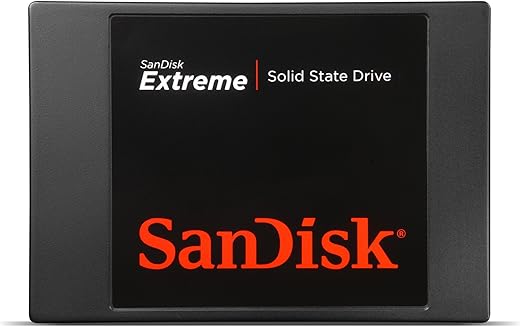
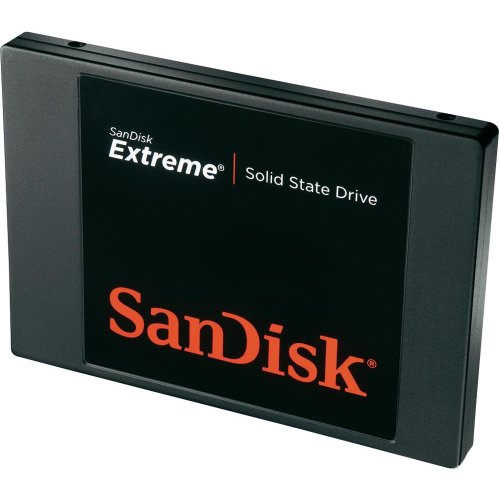
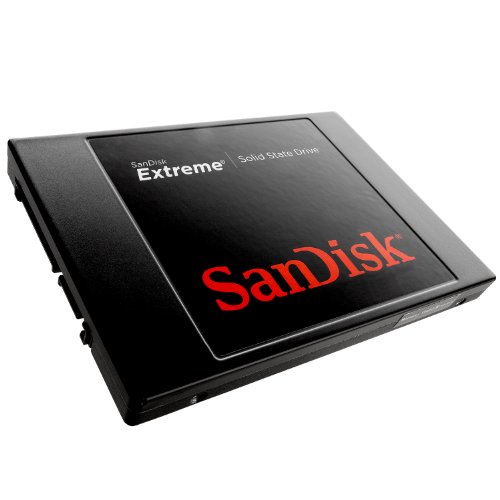
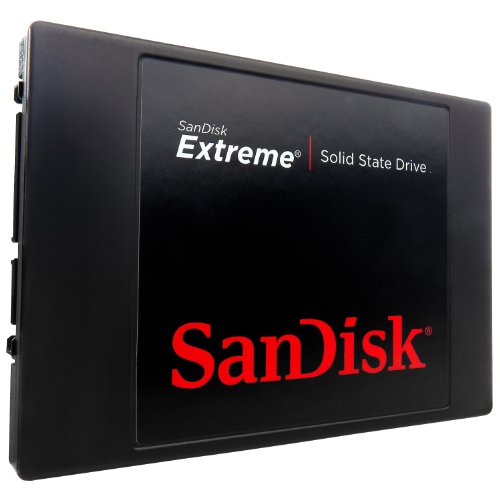
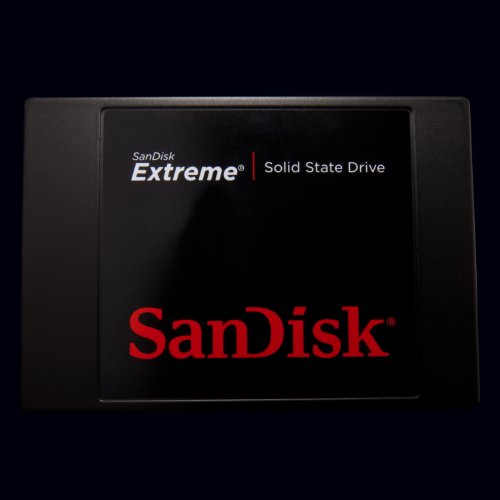






M. Carlini –
Se volete un’esperienza migliore, completamente diversa con il vostro pc, vi consiglio vivamente di investire in questo hard disk a stato solido. Negli ultimi anni abbiamo assistito a un aumento delle prestazioni degli altri componenti del computer: RAM e processore, ma per quanto riguarda gli hard disk l’unico aspetto che è migliorato è la capienza ma non la velocità. Infatti gli HDD meccanici hanno tempi di accesso relativamente alti dovuti alla rotazione dei dischi, e questo è il famoso collo di bottiglia dell’intero sistema.
Adesso ho installato questo Sandisk SDSSDX-120G-G25 Extreme HardDisk nel mio notebook che non è neanche nuovissimo, un hp pavilion dv3 (del 2009) con 4GB di RAM DDR2 e preocessore Core2Duo T6600 @2,2 GHz che tra l’altro non supporta la specifica SATA 3 a 6Gbps di questo SSD che consente di arrivare a velocità di picco in scrittura e lettura di oltre 500 MB al secondo. Ovviamente l’SSD è compatibile anche con le specifiche SATA 2 e SATA 1, ovviamente la velocità massima sarà circa la metà per SATA2 e un quarto per SATA1.
Ora nel mio notebook ho installato la versione release preview di Windows 8 che ha tempi di caricamento (boot) già ridotti rispetto ai precedenti Windows, con questo SSD vi posso confermare che dal momento in cui premo il tasto di accensione ad essere online con il browser passano 25 secondi. Tutto un altro mondo. Anche i tempi di caricamento delle applicazioni è fulmineo in confronto: ad esempio: per aprire Word, Excel 2010 ci vuole un secondo, per photoshop circa 8-10 secondi. E ci si abitua molto rapidamente, tanto che quando si torna ad utilizzare un PC che ha un HDD tradizionale si nota la differenza. Se avete un PC nuovo senza SSD ma anche di 4-5 anni vi consiglio di non cambiarlo ma di installare un SSD, possibilmente questo Sandisk che come ho già detto supporta la nuova specifica SATA3.
Questo hard disk non ha parti in movimento: si scalda di meno e ha un consumo ridotto quindi la durata della batteria è maggiore.
Io l’ho acquistato a metà giugno al prezzo di 93 euro. Un prezzo al momento ottimo. Sicuramente i prezzi sono destinati a scendere ulteriormente nei prossimi mesi, prevedo di acquistarne un’altro magari da 240GB verso la fine dell’anno per il pc desktop.
Sui pc desktop per l’installazione è necessario un apposito adattatore 2.5>3.5 al costo di una decina di euro al massimo. Compratelo e installatelo!
Transform_gamer –
Now, I must preference this by saying that these are indeed a hot commodity. Everyone is buying them, I need to invest into SanDisk’s stock. I bought 2 of them, 4 in all when you count the first pair that the mail carrier gave to my neighbor, who since has denied receiving it. Amazon was great about the whole thing because they refunded me on the spot, even though I had to spend about 20 dollars more to repurchase the unit because the sale was gone. But, thats the online game; thats the nature of the business. With that said, I am not disappointed at all in the ssd’s performance. Although, I did expect alittle more than what these ssd do, these are quite adequate for what they do.
Now right off I will tell you, this device was made to be on a computer that is post 2008. Meaning that the environment that I have them in does not lend it self to having this ssd perform at optimum levels. With that said, they still perform. For starters, I am running a dell dimenison 3000. For those who don’t know, these were made in 2003. Since then, I have updated the RAM to 2 gigs and now the SSD. These 2 things has had my old pentium 4 work a little less harder.
Good things:
I like the fact that there is a faster shutdown and start up. This helped when I had to reinstall the OS to the ssd (I don’t do cloning). Also, there is no noise. This is good because there are so many thing going on in this older computer, namely: the cpu fan, power supply fan. It is a relief not to hear the HD. Installs, I meantioned this earlier, are faster. OS runs alot more stable as well, meaning: programs load quicker, and things are copied from the CD quicker.
So, So, things:
Like I mentioned earlier, the OS is alot more stable, but there are some hang ups. One I noticed, unlike the mechanical HD, when the processor has a hang up on a program, all of the processes that are running slow run slow at the same rate. So for example, if I am installing a program and playing music at the same time on a mechanical HD, at some point my music may studder or clip. But with solid state, the music repeats like an old record player. Now take into consideration that my computer is old so you have old tech on new. But, that is just my observation. I guess thats the nature of the beast, everything is more unified with ssd(s).
Also, file transfer from internet or CD is a bit faster, but file transfer from say external HD or a slave internal HD is suprisingly slow. Now I understand the science of mechanical HDs, but I was expecting faster. Also, I don’t know if it is just me, but internet explorer is a little bit more unstable. I got alot of pages just crap out on me while installing updates.
I’ve heard some other cons like ‘not being able to make this a slave.’ My thing is, why. Why would you make a ssd a slave. That should be the driver for you computer. All and all, I think this is a phenominal product though. I wish they came with more storage and were cheaper, I would put this in my PS3. Maybe PS4 – when it comes out. Will buy another one when I build my new computer.
Johan –
I bought this SSD a couple days ago with the intention of installing it into the optical bay of my Late 2011 15″ MacBook Pro, and at first it wasn’t working at all (it couldn’t be read, formatted, written to, or erased by Mac OS). I spent a couple days being very frustrated (and became an expert at working on the innards of my MBP) until I spent more time looking on Mac forums and realized that my problem had nothing to do with my SSD. I already knew that MBP 2011’s have issues with using 6.0Gb/s in the optical bay, but I (stupidly) ignored what the community had to say about it, because according to system profiler (as well as my computer’s specs) the optical bay is fully compatible with 6.0Gb/s. It wasn’t until last night when I looked up my problem again in more detail, that I found out that MBP 2011’s all have issues with using 6.0Gb/s in the optical bay. Apparently, though they say they’re compatible, they’re not. From what I found out, you can use a 3.0Gb/s drive in the optical bay just fine, but if you try to use a 6.0Gb/s drive you’re in a world of hurt. From the get go, I know that many people had said that they chose to install their SSD in the hard drive bay, and put their original HD in the optical bay, but I was sketched out at first about it, because I know the HD bay has a shock protection feature that the optical bay doesn’t. I was still worried when I realized I had to switch them, but I looked up the 5400rpm 500GB hard drive model that my MBP came with, and it actually has built in shock protection, which makes me feel a lot better. The HD uses 3.0Gb/s and it works flawlessly in the optical bay. The lesson here is that you either have to install your 6.0Gb/s SSD in the HD bay, or just buy a 3.0Gb/s SSD. I know there’s a lot of issues with getting TRIM enabled on these disks on Macs as well, but I haven’t started messing around with that yet, when I do I’ll probably update this review though (I’m not very hopeful unfortunately). Either way, great product, works perfectly, good tech support, fast, light, silent, and durable, everything you would expect from an SSD made by a company like SanDisk.
Update: I’ve tried to enable TRIM support, but I wasn’t able to. After searching through SanDisk’s forums, I found out that their current firmware has a bug in it that prevents TRIM from working. Apparently they’re coming out with an update though, and I sent them an email asking for more information about it. When I find out, I’ll update again. Until then I’m lowering my rating to two stars, because TRIM is paramount for maintaining SSD speed, and unless you’re into formatting your SSD every time it starts to run out of blocks that it knows aren’t in use (which severely degrades use).
Update: TRIM support was restored by SanDisk shortly after my previous update, but I forgot to edit my review then
Luis Fernández –
Un gran dispositivo, pequeño, ligero con suficiente capacidad para sistemas operativos y aplicaciones y con una velodidad que nada tiene que ver con los discos tradicionales Sata
Max –
Suite à de bon échos concernant la technologie SSD,
je me suis lancé dans l’achat de ce SSD Sandisk 120Go.
Au niveau du prix/capacité,
il est parmi les meilleurs et bénéficie régulierement de promotions sur Amazon.
L’installation est très simple, idem qu’un disque dur “classique”.
Seule la fixation dans le boitier pourrait poser problème car il est vendu sans adaptateur ni cables.
Personnellement, j’ai utilisé un vieux rack interne pour lecteur de disquettes et le SSD ne bouge pas.
Niveau performance, on sera d’accord de dire que le démarrage du système d’exploitation est nettement plus rapide,
mais c’est pas sur ce point qu’il sera possible de juger car, une nouvelle installation démarrage toujours plus vite au début,
et se dégrade au fil des usages.
Je jugerais de la performance sur l’accès instantané aux fichiers,
au traitement des vidéos sur des logiciels de montages,
très gourmand en général et avec beaucoup de conversions et de mouvements de fichiers.
A ce niveau, j’ai divisé le temps de traitement vidéo par 4.
Pour le jeu, c’est le chargement qui est très rapide. La vitesse du jeu en lui même reste inchangé.
Pour les utilisateurs de Windows XP,
il est conseillé de l’optimiser pour avoir de meilleures performances et également pour prolonger la vie de votre SSD.
De nombreux sites vous citent les points à optimiser.
Je recommande ce SSD Sandisk.
M. Carlini –
Hab mir die SSD gekauft um meinen etwas betagten Rechner mal wieder neue Geschwindigkeit zu verleihen. Die SSD bietet deutliche Vorteile gegenüber der Festplatte: Zugriffszeit ist extrem gering, sehr hohe Transferraten und die Robustheit. Leider sind bei meinen Rechner die Transferraten nicht mal halb so hoch wie angegeben: 130 MB/s sind maximal drin. Das scheint vor allem an der Konfiguration der Hardware zu liegen:
Mainboard: MSI K9N-Neo F, SATA2, nForce 550
Prozessor: Athlon 3800+, 2.4 GHz Singlecore
Speicher: 2048MB DDR2 / 800 MHz
Die Southbridge scheint hier der Flaschenhals zu sein. Allerdings ist die SSD noch gut doppelt so schnell wie meine alte eingebaute HDD, welche 60 MB/s transferiert. Die Zugriffszeit ist um den Faktor 100 (von 12 ms auf 0.13ms) gesunken. Windows 7 startet jetzt auch innerhalb von ca. 20 Sek.
Die SSD ist in einen schönen Alugehäuse verpackt, welches die Wärme (welche minimal ist) schnell ableitet. Die SSD würde sich so bestimmt auch für den mobilen Einsatz eignen, SATA-Adapter vorausgesetzt. Leider ist das Zubehör mehr als spärlich ausgefallen. Lediglich eine Anleitung, welche aber nicht einmal den Systemumzug beschreibt, ist dabei. Kann man bei den Preis aber auch nicht wirklich erwarten. Die Gewinde sind Passgenau, keine Probleme mit den Schrauben gehabt.
Bis auf der SSD allerdings Windows 7 lief, war es ein langer Weg. Zunächst habe ich einfach versucht den kompletten Inhalt der Festplatte auf die SSD zu klonen und wurde nach dem Start prompt von einen Bluescreen (0xF4) begrüßt.
Also nochmal das alte System gestartet und gleich das Firmwareupdate mit den SanDisk SSD Toolkit auf Version R201 installiert, was keine Besserung brachte.
Wie sich herausstellte waren mal wieder die Windows-Treiber schuld. Also habe ich alle Treiber mit Sysprep –> OOBE erst mal entfernt. Nach dem Klonen mit Parted Magic lief das System. Die Geschwindigkeit ist jetzt schon atemberaubend. Allerdings war das noch nicht alles: Windows möchte auch auf die SSD vorbereitet werden. Diverse Anleitungen gibt es wenn man “Windows für SSD optimieren” in Google sucht.
Fazit: Die SSD ist für den Preis einfach sehr gut. Sie bietet einen aktuellen Sandforce Chip und gute Flashchips (24nm) aus dem Hause Sandisk. Es sind 4x 32GB Flashbausteine verbaut. Die Haltbarkeit sollte pro Flashzelle bei ungefähr 3000-4000 Schreibvorgängen liegen. Bei täglich 25 GB schreiben hält die SSD ca 10 Jahre. Das ist mehr als ausreichend!
M2K5 –
en fait je ne suis pas un grand connaisseur mais je peux faire part de mon expérience et elle est plutôt positive. ainsi je suis passé d’un simple HDD pour mon boot à ce ssd et je peux le dire en en terme de rapidité c’est le jour et la nuit. mon pc qui mettait grosso modo une petite minute à démarrer complètement doit désormais mettre une quinizaine de secondes voir moins, c’est limite instantanée tant la différence est flagrante. pour vous donner un exemple le logo de windows 7 n’a pas le temps de se regrouper que le bureau apparaît quasi en place. c’est dire.
l’accés aux fichiers et autres dossiers et très rapide aussi, c’est du on/off pour ainsi dire, aucun temps de latence. je n’ai pas eu l’occasion de le tester plus à fond mais les premières impressions sont très positives.
il y atout de même un mais, le bulk est réduit à sa plus simple expression c’est à dire le ssd, un emballage et c’est tout.
faudra vous débrouiller pour les vis et le câble, en espérant que vous en ayez de côté.
autre chose, la capacité, suffisante pour un OS elle devient plus limite si on est un gamer acharné voir un un gamer tout court, on a vite fait de le remplir, mais là c’est surtout le portefeuille le juge de paix.